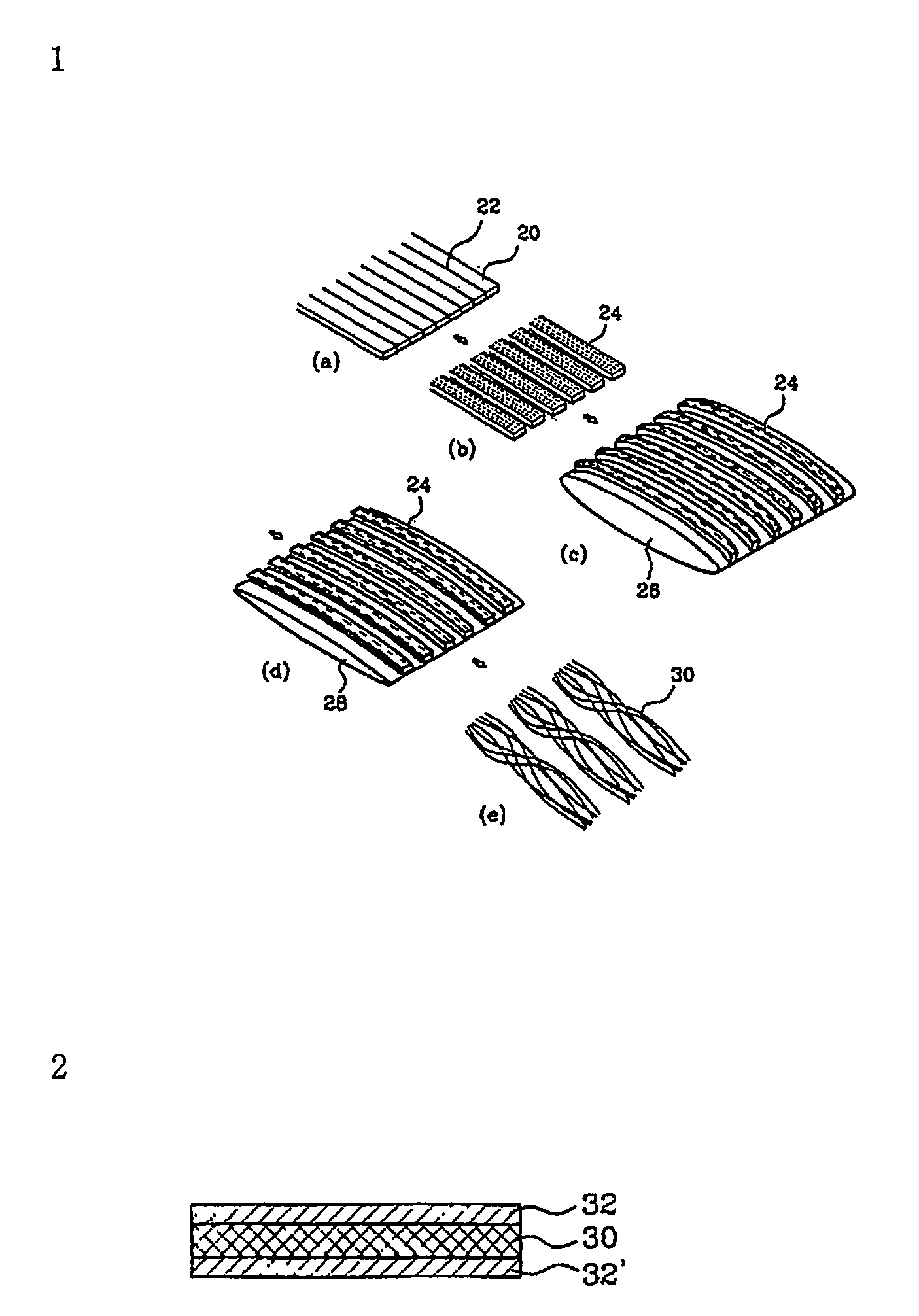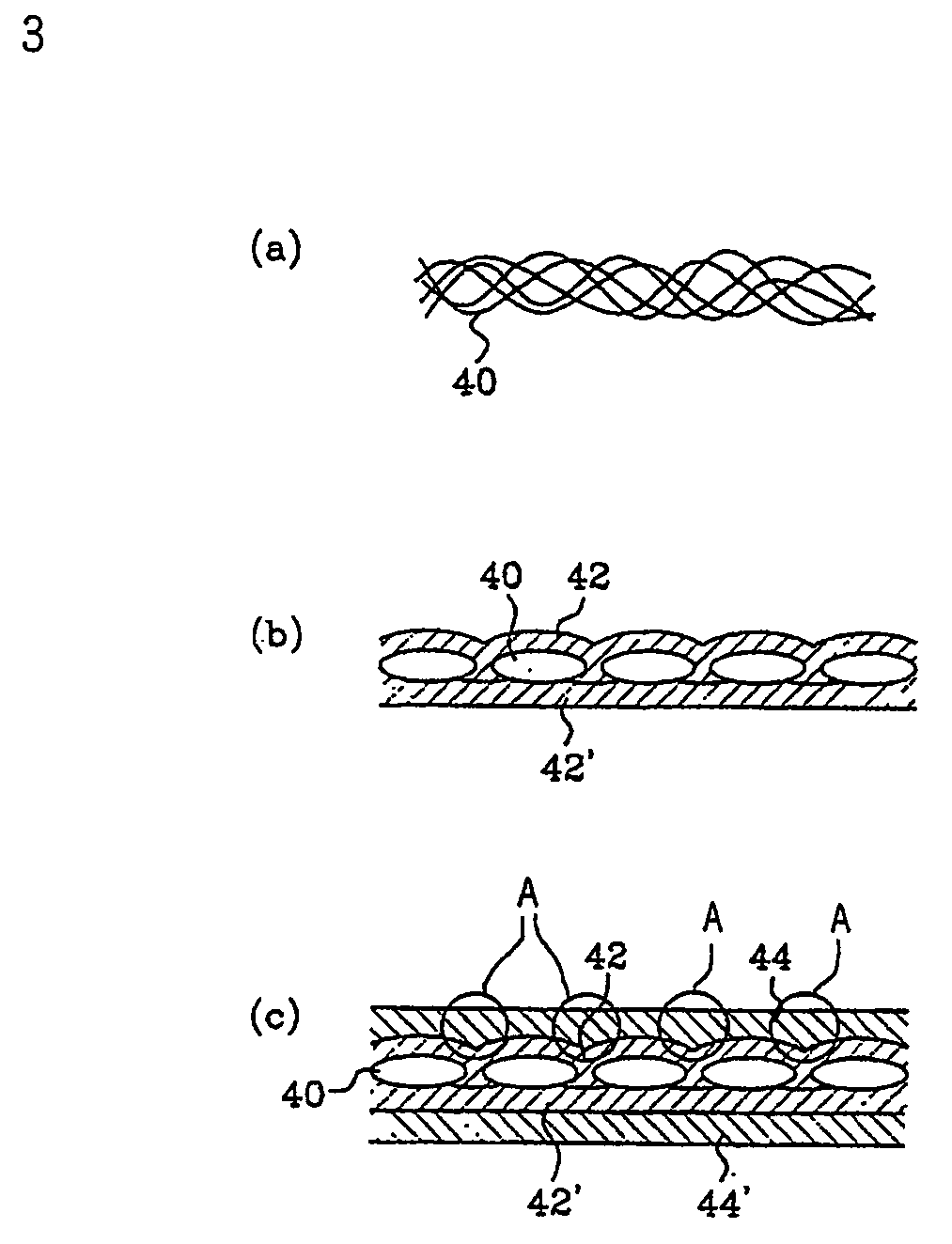Tarpaulin by using polyolefin group split yarn and method thereof
a polyolefin group and split yarn technology, applied in the field of tarpaulin by using polyolefin group split yarn, can solve the problems of limit in drawability, large tension for working, and near inability to manufacture woven cloths by means, and achieves the effects of low cost, easy processing, and low cost of equipmen
- Summary
- Abstract
- Description
- Claims
- Application Information
AI Technical Summary
Benefits of technology
Problems solved by technology
Method used
Image
Examples
Embodiment Construction
[0031] A tarpaulin by using a polyolefin group split yarn and a method for manufacturing the same in accordance with the present invention will now be described in detail with reference to the accompanying drawings.
[0032]FIGS. 4a to 4e are views illustrating processes for manufacturing a split yarn constructing the polyolefin group tarpaulin in accordance with the present invention and FIG. 5 is a cross-sectional view illustrating a structure of the polyolefin group tarpaulin in accordance with the present invention. Firstly, processes for manufacturing the polyolefin group split yarn will be described with reference to FIG. 4.
[0033] Referring to FIG. 4a, a polyolefin group resin 200 is firstly slit to several strands 220 by using a cutter and thereafter the several strands 220 are firstly drawn by using a drawing plate 260, as shown in FIG. 4b. Thereafter, the surface of the slit and drawn each tape yarn is split with a constant size, thereby forming a split yarn, as shown in FIG...
PUM
| Property | Measurement | Unit |
|---|---|---|
| diameter | aaaaa | aaaaa |
| diameter | aaaaa | aaaaa |
| length | aaaaa | aaaaa |
Abstract
Description
Claims
Application Information
 Login to View More
Login to View More - R&D
- Intellectual Property
- Life Sciences
- Materials
- Tech Scout
- Unparalleled Data Quality
- Higher Quality Content
- 60% Fewer Hallucinations
Browse by: Latest US Patents, China's latest patents, Technical Efficacy Thesaurus, Application Domain, Technology Topic, Popular Technical Reports.
© 2025 PatSnap. All rights reserved.Legal|Privacy policy|Modern Slavery Act Transparency Statement|Sitemap|About US| Contact US: help@patsnap.com



